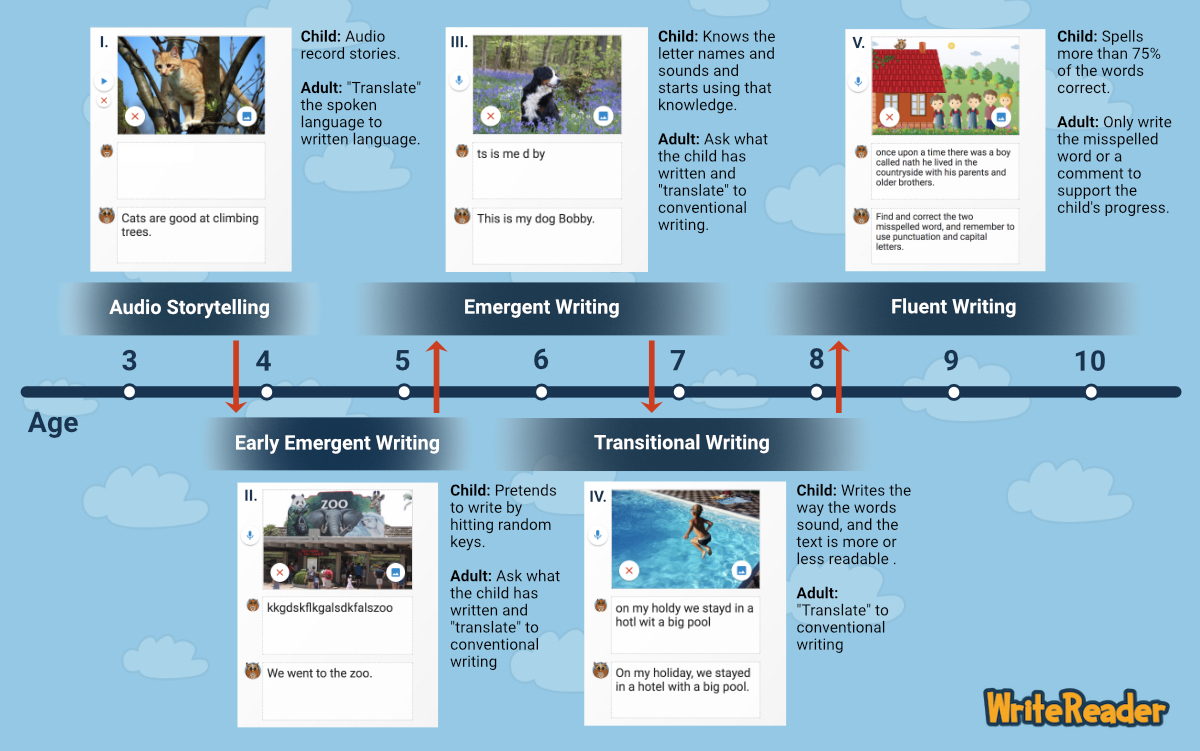Stages and six traits of writing (Entry 6)
Pre-literate/ Audio storytelling stage (2-3yrs)
This stage is mostly focused on spoken language and gives the younger children the opportunity to share stories by recording. This is where parents or teachers can translate the spoken language into written words so a comparison can be made between written and spoken language. They also use drawing in place of written words. They are convinced that this is a way of communicating what they wish to express.
Early Emergent writing (3-5yrs)
This stage begins with children scribbling. At this stage, they are learning about what writing is about by linking sound-symbol correspondence. Their shapes in writing look like letters and are usually formed in their unique way.
Emergent writing stage (4-6yrs)
Children at this stage have taken steps from scribbling to actually writing symbols called letters. they may write letters in many ways. At this stage, they begin to understand that letters play a big role in writing. As they become better, they begin to write letters clearly to eventually be able to write words.
Transitional Stage ( 5-7yrs)
Children begin to understand that letters make up words and that they represent certain sounds. They begin to hear words to letters they know and begin to write according to the sounds they hear. At this stage, they are likely to mix up certain letters with others. They also represent words using the beginning sound of each word, uses beginning and final consonant sounds, and eventually, start to fill in vowels in words.
Fluency Stage (6-8yrs)
Children begin to use dictionary spelling of words at this stage. Their spelling may not always be accurate but they understand that there are different spellings and different meanings. They are more likely to develop strategies for writing at this stage and spell most words correctly. At this stage, they also understand that there are different types of text structures and understand how to use them. They are also able to edit their work and write on a wide variety of topics.
Six traits of writing
-Ideas- the meaning and development of the message (content).
- Organization- the internal structure of the piece (structure).
-Voice- the tone of the piece in other words the personal stamp that the writer brings to it ( style).
-Word choice- the specific vocabulary the writer uses to convey meaning.
-Sentence fluency- the way the words and phrases flow throughout the text.
-Conventions-the mechanical correctness of the piece.

.png)
I love how you used a graphic organizer to show how traits of writing and the stages of writing could be combined to help learners. I especially liked the little activities you had for each stage on how the action could be demonstrated. Also, an additional way that the early emergent writer could be used in the pre-writing stage is by giving an idea or topic that is suitable and letting them scribble or draw what they want about the topic. Then skip to the publishing stage and ask the students what he/she drew or what did they write about.
ReplyDelete